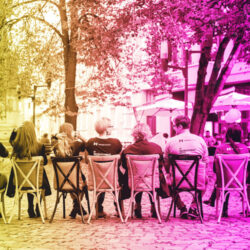Where is this community located? (This doesn't have to be a physical space or realistic, may also be digital)
How large is this community?
What are the aspects that connect its members? (eg. beliefs, goals, location, professional interests, socio-political interests, characteristics, shared history)
What exchanges are there between the community members? How would these exchanges be structured? (eg. material goods, monetary, emotional, communication, knowledge exchange)
What are the components necessary for the community to thrive? (eg. shared activities, support systems - internal or external, mental and or physical health, stability/security)
How would the community sustain itself? Would it be reliant on external infrastructure?
How does belonging to this community benefit its members in their well-being?
What would your engagement in the community look like?
